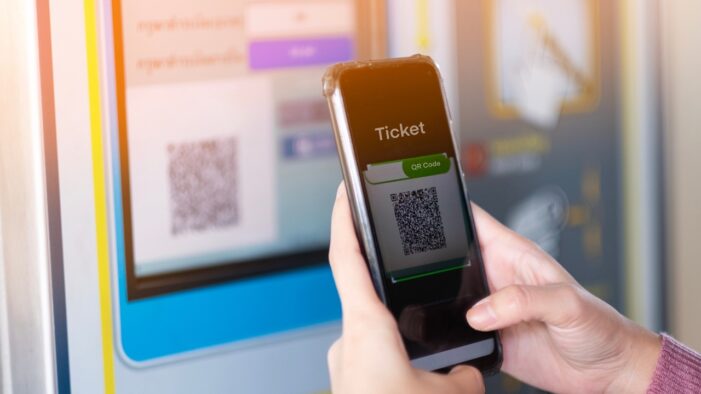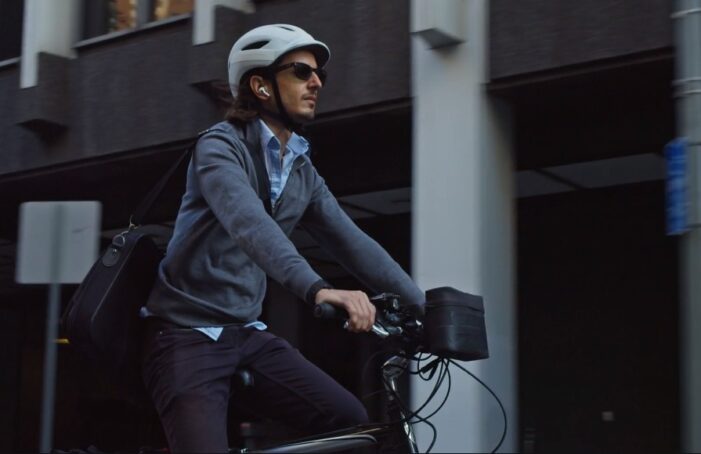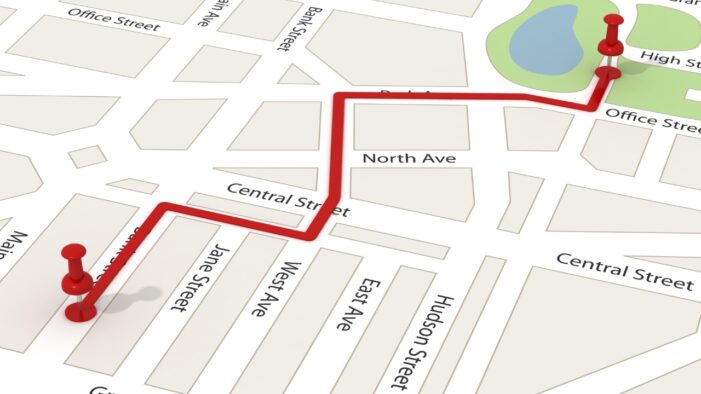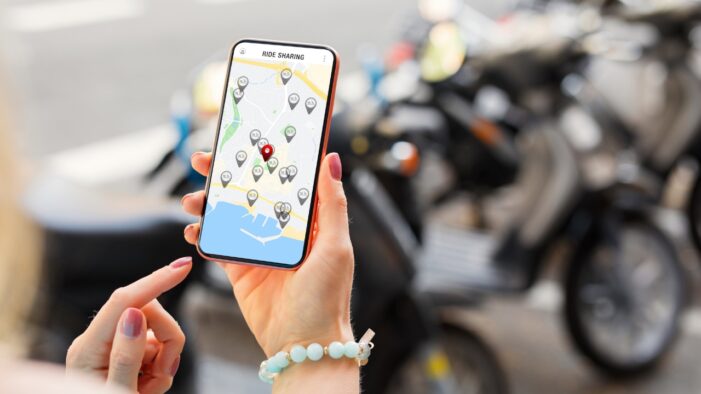Commuting without a car can seem like a daunting task, but it can also be a great way to save money, reduce your carbon footprint, and improve your overall health and well-being. With the increasing popularity of sustainable transportation options, it’s becoming easier than ever to get around without relying on a personal vehicle.
Whether you’re looking to save money, reduce your impact on the environment, or simply want a change of pace, there are many ways to commute without a car. In this guide, we’ll explore the various options available to you and provide tips for making the transition to a car-free lifestyle.
Public Transportation
Public transportation is a great way to commute without having to own a car. Whether you’re using buses, metro, bike-share, taxis, or a combination of these, public transportation can be reliable, cost-effective, and convenient. In this section, we will explore the pros and cons of public transportation and provide tips for an easy and efficient commute.
Research available public transportation options in your area
Researching available public transportation options in your area is an important step in commuting without a car. It can save you time, and money, and reduce your carbon footprint. To start, follow these steps:
- Research local bus and train schedules: Look for routes and schedules for buses, subways, light rail, and commuter trains that serve your area.
- Check for discounted fares: Many transportation authorities offer discounted fares for seniors, students, and disabled riders.
- Plan your route: Use online trip planning tools to map out the best routes and schedules for your commute.
- Consider alternate options: Commuting by bike, walking, or carpooling can be a great alternative to using public transportation.
Plan your route and schedule
When commuting without a car, planning your route and schedule is crucial to ensure a smooth and efficient journey. Here are some tips to help you plan your public transportation commute:
- Check the schedule: Make sure you know the exact arrival and departure times for your chosen mode of transportation.
- Research the route: Use a reliable online trip planner or transportation app to determine the best route and any necessary transfers.
- Plan for delays: Leave extra time in your schedule to account for unexpected delays, such as traffic or construction.
- Look for discounts: Check for discounts or deals on tickets, especially for frequent commuters.
- Stay informed: Use social media or transit alert services to stay informed about any schedule changes or service disruptions.
By carefully planning your route and schedule, you can make your commuting experience stress-free and efficient.
Purchase tickets or passes

Purchasing tickets or passes is a critical step in commuting without a car using public transportation. Here are the different ways to buy tickets or passes:
- Ticket vending machines: These are available in most metro stations and bus stops. Simply follow the on-screen instructions to purchase your ticket or pass.
- Mobile apps: Many public transportation services have apps that allow you to buy and store your tickets or passes on your phone.
- Online: You can also purchase tickets or passes on the official website of the public transportation service you plan to use.
- Retail stores: In some areas, you can buy public transportation tickets or passes at retail stores like convenience stores or supermarkets.
Biking
Biking is a great way to commute without a car. Not only is it an environmentally friendly option, but it can also be a great way to get exercise while you’re out and about. Additionally, biking can be a great way to save money since you won’t have to worry about gas or car maintenance costs. Let’s explore all the benefits of biking to commute.
Select a bike that is right for you

Choosing the right bike is crucial to ensure comfort, safety, and enjoyment when cycling for commuting or leisure. Here are some tips to help you select a bike that’s right for you.
- Determine your cycling needs: Consider your commuting distance, terrain, road conditions, and storage options to determine the type of bike that suits your needs.
- Choose the right size: Ensure that you select the right size of bike to avoid discomfort, muscle fatigue, or accidents while cycling.
- Consider the bike’s features: Look for features such as the frame material, gears, suspension, brakes, and tires that complement your cycling style and road conditions.
- Test-ride the bike: Before making a purchase, test-ride the bike to confirm its performance, comfort, and fit.
By following these tips, you can choose a bike that suits your cycling needs and preferences, making your commute or leisure ride a comfortable and safe experience.
Invest in safety gear
Investing in proper safety gear is crucial when commuting by bike, whether you are going to work or running errands.
- Wearing a helmet is a must to protect your head from injury. You should also consider investing in other protective gear such as elbow and kneepads, gloves, and reflective clothing.
- Reflective clothing will help make you visible to other commuters, especially during low-light hours.
- Cycling gloves provide a better grip and protect your hands from blisters.
- Elbows and kneepads can protect you from abrasions and injuries if you fall off your bike.
- For added protection, you can also install bike lights and reflectors on your bike.
Overall, investing in quality safety gear can ensure that your commute is as safe as possible.
Plan your route and follow traffic laws

When biking to commute, it’s important to plan your route and follow traffic laws to ensure your safety and the safety of others. Here are some tips to follow:
- Plan your route in advance using biking maps or safe biking apps.
- Choose roads with designated bike lanes or low-traffic streets.
- Wear a helmet and brightly colored clothing.
- Follow traffic laws, including stopping at red lights and stop signs, signaling turns, and riding with the flow of traffic.
- Be aware of your surroundings, including cars, pedestrians, and other bikers.
- Stay focused and avoid distractions, like listening to music or checking your phone while biking.
Walking

Walking is one of the best and easiest ways to commute without a car – it’s free, you can do it anywhere and it’s great for your health. Plus, it’s an effective way to reduce air pollution given that cars are the largest source of air pollution. Let’s look at the other benefits of walking as a way of commuting.
Determine the distance to your destination
Determine the distance to your destination before walking as it helps you plan your route and estimate the time it will take to arrive there. To determine the distance, you can use an online map that allows you to enter your starting point and destination and calculates the distance between them. Another method is to use a pedometer or a fitness tracker that tracks the number of steps you take and converts them into distance traveled.
Knowing the distance will also help you decide if walking is feasible for your commute or if you need to consider alternative transportation options such as biking or taking public transit.
Plan your route

Planning your route is essential when it comes to commuting without a car. Walking is an eco-friendly and economical way to travel, but it can be challenging if you don’t plan your route beforehand. Here are some tips to help you plan your walking route:
- Use a map: You can use Google Maps to plan your walking route. Type in your starting point and destination, and the app will show you the walking route.
- Look for shortcuts: If you walk the same route every day, look for shortcuts that can save you time.
- Consider the weather: Check the weather forecast before heading out. Choose covered routes if it is raining or avoid walking during extreme temperatures.
- Safety first: Choose routes that are well-lit and populated. Avoid unsafe areas and take note of areas that require special attention.
By planning your route, you can make your walks more enjoyable, safe, and efficient.
Wear appropriate and comfortable shoes
Wearing appropriate and comfortable shoes is one of the essential components of commuting without a car by walking. Here are some tips on choosing the right shoes:
- Choose shoes with good arch support and cushioning to prevent foot fatigue and injury.
- Look for shoes that fit well and don’t rub or pinch, as this can cause blisters and discomfort.
- Opt for shoes that are breathable and lightweight, as this will help keep your feet cool and comfortable, especially when walking long distances.
- If you are walking in wet or slippery conditions, choose shoes with good traction to prevent slips and falls.
Ride Sharing

Ride-sharing is an increasingly popular option for commuting without a car. This trend is driven by its convenience and cost savings as compared to using a car. Ridesharing can also be a great way of meeting new people and connecting with your local community.
Download a ride-sharing app
Downloading a ride-sharing app can make your daily commute easier and more cost-effective, especially if you don’t have a car or prefer not to drive. Ride-sharing apps like Uber and Lyft allow you to request a ride with just a few taps on your smartphone. Here are some benefits of using ride-sharing apps for commuting:
- Cost-effective: Ride-sharing is often more affordable than owning and maintaining a car, especially if you only need transportation occasionally.
- Convenient: Ride-sharing apps make it easy to request a ride from anywhere, at any time, without having to wait for a taxi or public transportation.
- Safe and reliable: Ride-sharing companies typically have strict safety protocols in place and thoroughly screen their drivers to ensure the safety of passengers.
- Eco-friendly: Taking a ride-share instead of driving alone reduces the number of cars on the road, resulting in less traffic congestion and lower carbon emissions.
Schedule your ride

One of the biggest perks of ride-sharing services is the ability to schedule your ride in advance, making commuting without a car hassle-free and more convenient. Here’s how you can schedule your ride using popular ride-sharing apps:
- Uber: Open the app, set your pickup location, and select “Schedule a Ride” at the bottom of the screen. Choose your desired pickup date, time, and destination, and confirm your booking.
- Lyft: Open the app and select “Schedule” under the “Search destination” field. Choose your pickup date, time, and destination, and confirm your booking.
By scheduling your ride, you can rest assured that a driver will be available to pick you up at your desired time, avoiding the trouble of waiting or being unable to find a ride during peak hours.
Verify the safety of the ride-sharing option
Ride-sharing is a convenient and inexpensive way to commute without a car, but before using this option, it is essential to verify the safety of the service. Here are some ways to verify the safety of ride-sharing services:
- Background check: Check if the ride-sharing service conducts background checks on its drivers. This will ensure that you are not riding with someone who has a criminal history or a poor driving record.
- Vehicle inspection: Verify if the ride-sharing service inspects each vehicle regularly to ensure it is in good working condition and meets safety standards. Insurance: Check if the ride-sharing service provides insurance coverage for riders in case of an accident or other incidents.
- Reviews: Research the ride-sharing service’s reviews online to see what other riders have said about the safety and reliability of the service.
Telecommuting

Telecommuting is a great option for those who want to reduce their carbon footprint or for those who don’t want to or can’t invest in a car. There are many different options for telecommuters, including public transport, walking, cycling, and ridesharing. In this section, we’ll look at some of the pros and cons of these different methods of telecommuting and how to get started.
Determine if your job is suitable for telecommuting
Telecommuting or working from home is a growing trend in today’s workforce, allowing employees flexibility and savings on commuting costs. But before deciding if telecommuting is the right option for you, it is important to determine if your job is suitable for remote work. Here are some factors to consider:
- Do you have the necessary technology and equipment to complete your work from home?
- Can your job be done independently, without constant supervision or face-to-face interactions?
- Can you work productively from home without distractions?
- Does your job involve working with confidential or sensitive information that cannot be accessed from outside the workplace?
If the answers to the above questions are yes, then telecommuting might be the right fit for you. However, it’s essential to communicate effectively with your employer and establish a schedule and clear expectations to ensure a smooth transition to this working arrangement.
Discuss with your employer and make the necessary arrangements

Telecommuting has become increasingly popular as people look for ways to reduce their carbon footprint and save on commuting costs. However, before you start telecommuting, it’s important to discuss with your employer and make the necessary arrangements. Here are some steps you can take to successfully transition to telecommuting:
- Discuss telecommuting with your employer to ensure that your work can be done remotely and that your boss is on board with the arrangement.
- Determine what equipment and tools you will need to work from home and make sure your employer provides them.
- Establish clear expectations and communication channels with your employer and co-workers.
- Set up a dedicated workspace in your home and stick to a regular work schedule.
- Review local telecommuting regulations and make sure you comply with any legal requirements.
By discussing with your employer and making the necessary arrangements, you can successfully transition to telecommuting and enjoy the benefits of a more flexible work arrangement.
Designate a dedicated workspace at home
Designating a dedicated workspace at home is crucial for anyone who works remotely or telecommutes. Not only does it improve productivity and concentration, but it also helps create a boundary between work and personal life. Here are some tips to create an effective home workspace:
- Choose a quiet and well-lit space away from distractions like the TV or the kitchen. Invest in a comfortable chair and an ergonomic desk, if possible.
- Keep all necessary equipment handy, such as a computer, printer, and office supplies.
- Decorate the space with plants, photos, or artwork to personalize it.
- Set boundaries with family members or roommates and let them know when you’re working and shouldn’t be disturbed.
- Lastly, make sure to take breaks and move around throughout the day to stay energized and focused.
It’s important to create a sense of structure and routine in your remote work life to be more productive and avoid burnout.
FAQs

How do I carpool with my coworkers?
You can start a carpool by reaching out to your coworkers and coordinating schedules and pickup locations. You can also use carpooling apps or websites to help find other people who are interested in carpooling.
What if it rains or snows?
If it rains or snows, you can use public transportation, ride-sharing services, or take a taxi. You can also consider investing in waterproof gear or using a covered bike lane or path.
How can I stay motivated to commute without a car?
You can stay motivated to commute without a car by setting goals, tracking your progress, and rewarding yourself for reaching milestones. You can also join a car-free commuting community or find a commuting buddy to share the experience with.
How do I find a job close to my home?
You can find a job close to your home by using job search websites, reaching out to your network, or attending job fairs in your area. You can also consider telecommuting or starting your own business.
Can I still go on trips without a car?
Yes, you can still go on trips without a car. You can use public transportation, ride-sharing services, or rent a car. You can also consider taking a bike tour or hiking trip.
What if I have to carry a lot of stuff with me?
If you have to carry a lot of stuff with you, you can use a backpack, panniers, or a cargo bike. You can also consider using a delivery or courier service to transport your items.
What are the environmental benefits of commuting without a car?
Commuting without a car reduces your carbon footprint by reducing the number of emissions and pollutants you contribute to the environment. It also reduces your dependence on oil and other finite resources, helping to conserve these resources for future generations.
How can I make the transition to a car-free lifestyle?
To make the transition to a car-free lifestyle, you can start by gradually reducing your reliance on your car. You can try using public transportation, biking, or walking for short trips, and gradually increase the distance over time. You can also plan your trips in advance and consider the weather, traffic, and your schedule. It’s important to be flexible and willing to try new things as you make the transition.
Conclusion
In conclusion, commuting without a car is not only possible but also beneficial in many ways. From taking public transportation, riding a bike, carpooling, or walking, there are a variety of options available to suit your needs and preferences. Making the switch to a car-free lifestyle can help you save money, reduce your carbon footprint, and improve your physical and mental health. With a little bit of planning and creativity, you can easily find a sustainable commuting solution that works for you. So, why not give it a try and see how it impacts your life and the environment?

